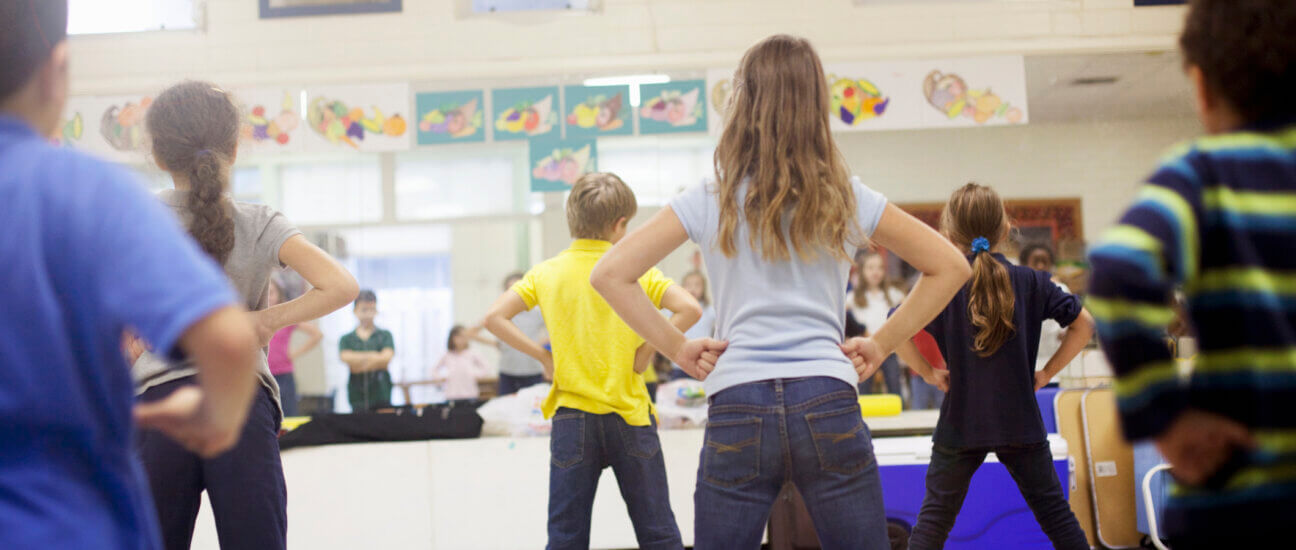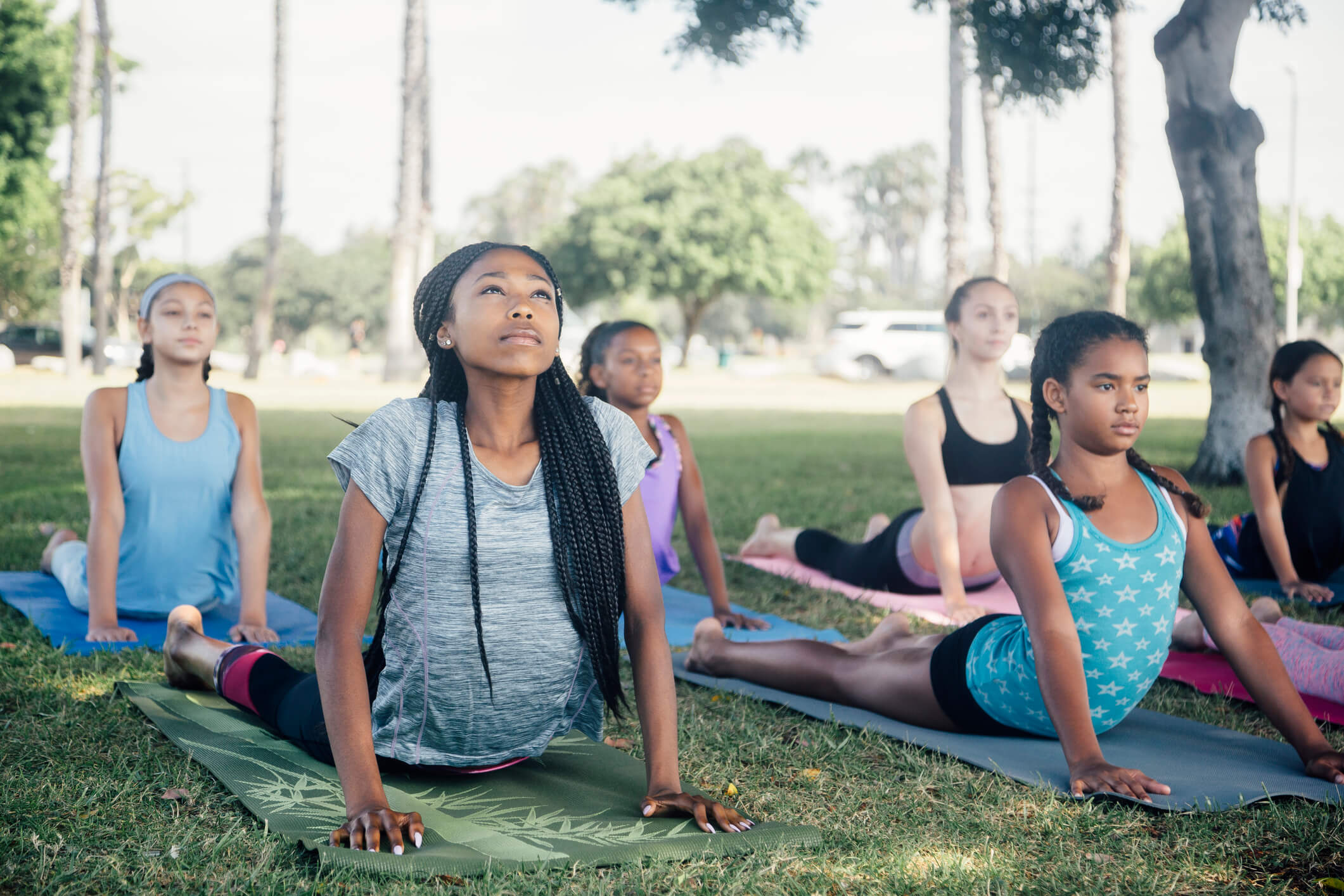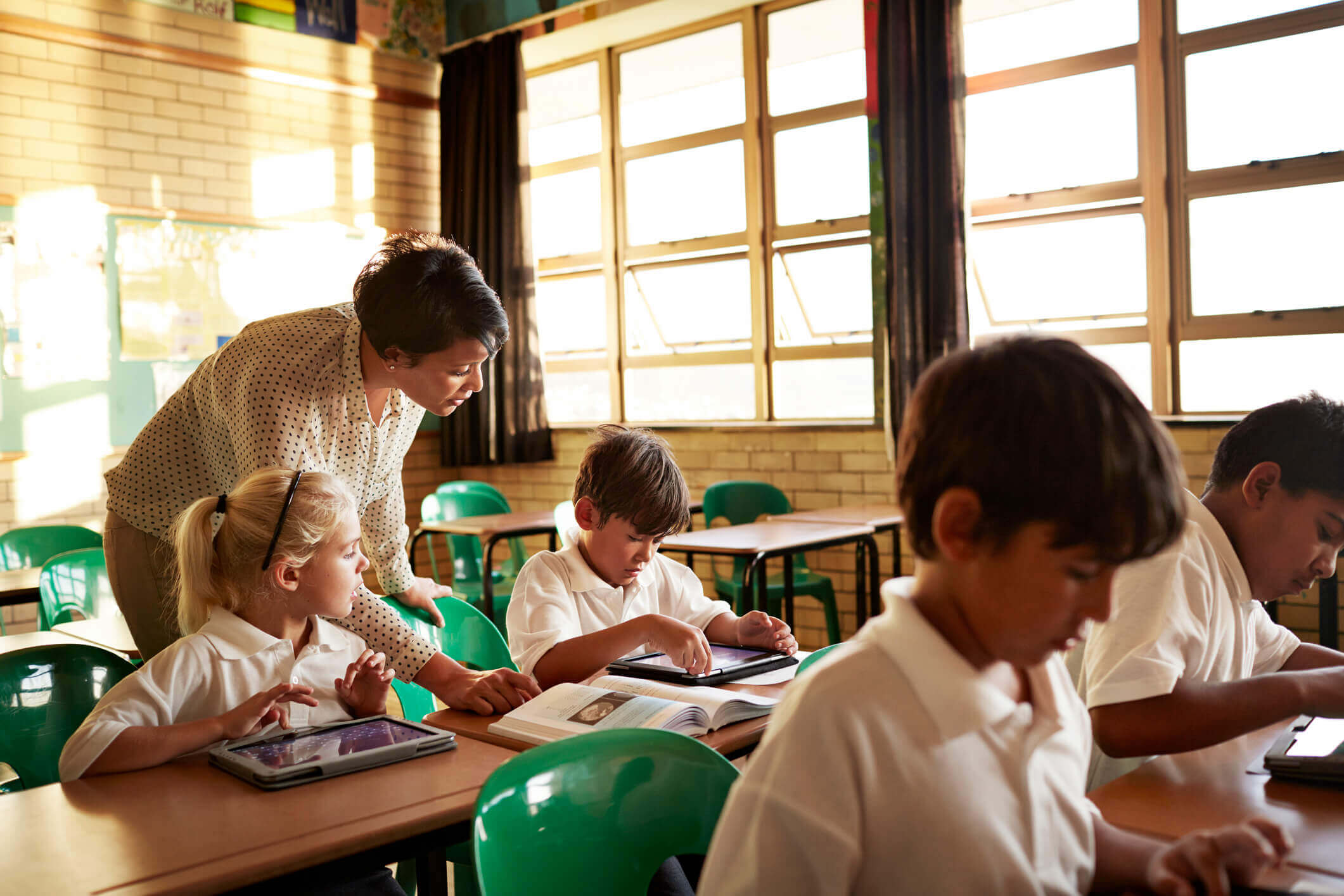Published on September 20th, 2023
The Best Interactive Whiteboard Games for Physical Education
11 minute read

Technology helps teachers enrich the curriculum and boost student engagement. Interactive whiteboards and displays, in particular, can make lessons appeal to all students, regardless of their preferred learning style.
Even in physical education – a lesson historically taught outside, away from the classroom – interactive displays can be beneficial. Whether it’s a theory lesson, looking at the inner workings of how our bodies move and function or a substitute for outdoor activities, these displays are invaluable tools.
Here, we explore how you can use interactive whiteboards during PE lessons to ensure indoor physical education lessons are enjoyable for the entire class.
Nine interactive whiteboard activities for physical education
1. Warm-up and down videos
As any athlete or budding athlete will know, properly warming up and down are crucial in reducing muscle tightness and soreness.
Your interactive whiteboard can display and demonstrate different stretches to help your students avoid pulled muscles after sport. Video sites like YouTube are full of expert guides to warming up and down.
These videos are beneficial as your students can watch them anywhere, including in their own time, as a revision tool, and because they give your class another voice to engage with and listen to.
2. Educational videos display
Keeping students engaged for an hour can be difficult, especially when holding a theory lesson. To help you break up your class, you should utilise different videos and forms of media shown on your interactive whiteboard.
As well as making lesson plans easier, introducing students to different experts will enrich their experience, showing your class new ideas and theories. Another benefit of showing videos to your class is that you can appeal to students with visual and auditory learning styles.
3. Fitness bingo
This can be a great way to engage kids at either the beginning or end of a lesson. Fitness bingo is a creative way of allowing students to show what they have learned (or what they remember from last time), and it can break up theory-heavy classroom lessons.
To play fitness bingo, give students a ‘bingo card’ with various activities, like star jumps and running on the spot. Next, use the interactive display to show the exercises, with students ticking them off until they have a full house.
Fitness bingo is a fun game that students of all ages can get involved in. If you teach younger students, ensure the actions are easy for them.
4. Quizzes
After teaching students about a new theory, an excellent way to test their understanding and consolidate what they have learned is to quiz them. Quizzes are more than just helpful for students; you can review their answers to identify any topics they need to revisit before big exams.
Free quiz apps like Kahoot! are great for engaging students, and you can design questions to include different types of media, including pictures and videos.
Additionally, quizzes are also helpful for gamification; you could start a leaderboard to encourage students to compete against each other. This way, you can promote sportsmanship and praise students’ work without heading out onto the pitch, field or court.
5. Memory games
To keep students interested and identify potential strengths and weaknesses, you should create your own games to test their knowledge of topics you have covered.
One way you can do this is by organising memory games; this could be as simple as posting pictures on your interactive display and asking students to shout what they see.
You could, for example, show images of different types of food and ask students what food group they fit into and where they should sit in the food pyramid. This helps to jog students’ memories of the different food groups and consolidate what you have taught them.
You can relate this to playing sports, too, as your students must recall tactics and take up the correct positions, particularly in team games.
6. Yoga
Yoga has many benefits, from improving strength, balance and flexibility to reducing stress and lifting your mood. With an interactive whiteboard, there’s no need to worry about being a fully-trained yogi. YouTube has thousands of videos led by professionals, from basic yoga poses and simple exercises to expert workouts.
It’s important to note that yoga requires a lot of core strength, so you must tailor yoga sessions to your student’s age group.

7. Engaging presentations
One of the most straightforward benefits of using interactive whiteboards in a sports science class is the tools and resources to make fun, engaging, educational presentations. All you need is an internet connection, and you can start adding entertaining gifs, pictures, links to relevant YouTube videos or podcasts, and more to your presentations.
For most PE students, the practical side will be more enjoyable than the subject’s sports science and theory side. But this shouldn’t put classroom teachers off giving their presentations a makeover. If entertained, students are more likely to participate in lessons and engage with course materials.
8. Performance analysis
When teaching your class about movement, it’s helpful to show them visual examples of how they should perform a skill or technique. For example, when a footballer feints and changes direction during play or when a team works together in a set piece.
This type of performance analysis can demonstrate the effectiveness of tactics and strategies in many sports. You can play footage for a sports science class by utilising software designed for interactive whiteboards.
This is beneficial for multiple reasons. Firstly, you can show every student the example simultaneously, making for more efficient learning. Secondly, you can appeal to various learning styles in one exercise. Finally, the software lets you pause, rewind and slow down videos, so you can show students the exact moment the discipline or skill has been performed.
9. Reactions tests
This interactive game is a great tool that ensures even indoor lessons can be competitive as students try to get the fastest reaction times.
Reaction test games use the touch-screen interface of an interactive whiteboard to create a dynamic sequence of illuminations that students must tap each time one appears. The quicker students tap the buttons, the better their reaction time.
As well as being used as a substitute for proper physical activity, i.e. when it’s too wet to go outside, reaction tests can enhance lessons focusing on cognitive function and the brain’s relationship with the body.
Appealing to different learning styles in PE with an interactive whiteboard
Regardless of the subject you teach, using an interactive board can help maximise students’ learning and develop their problem-solving skills. It can also be beneficial for helping to engage students with ADHD or to engage disengaged students.
A key benefit of interactive whiteboards, like our ActivPanel display, is that educators can use them to improve the engagement rates of their students, regardless of which VARK learning models they fit into.
- Children with a visual learning style will benefit from seeing presentations and watching tutorials on how to, for example, master yoga poses.
- Children with an auditory learning style will engage with videos, too, as well as by participating in class discussions centred around performance analysis footage.
- Children with a reading and writing learning style will learn through text-based presentations and games, like quizzes.
- Children with a kinaesthetic learning style can get active by testing their reflexes and participating in yoga sessions.
Take a look at the Promethean blog for more advice on engaging with the four learning styles in the VARK model.
More guidance from Promethean
To help you ensure consistently high levels of engagement in lessons, regardless of the subject, our blog is full of advice. From how to engage shy and quiet students to measuring engagement at university, we have tips for helping every age group achieve.
FAQs
What is gamification in education?
Gamification is the addition of gaming elements into education to make learning more fun.
Gamification can take several forms, from point-scoring in quizzes to turning individual learning tasks into role-playing quests, like treasure hunts.
How does gamification help to engage students?
By infusing competition or storytelling into learning, it becomes more exciting for students. Gamification creates a sense of achievement and encourages students to participate in lessons and collaborate with friends.
Why do teachers use interactive whiteboards?
Interactive whiteboards cater to various learning styles with a single piece of technology.
Through touch, students can learn by seeing, hearing, and interacting with the board. This equips teachers with new, creative ways to teach the material. Because of this, teachers find that students learn faster and remember more.




